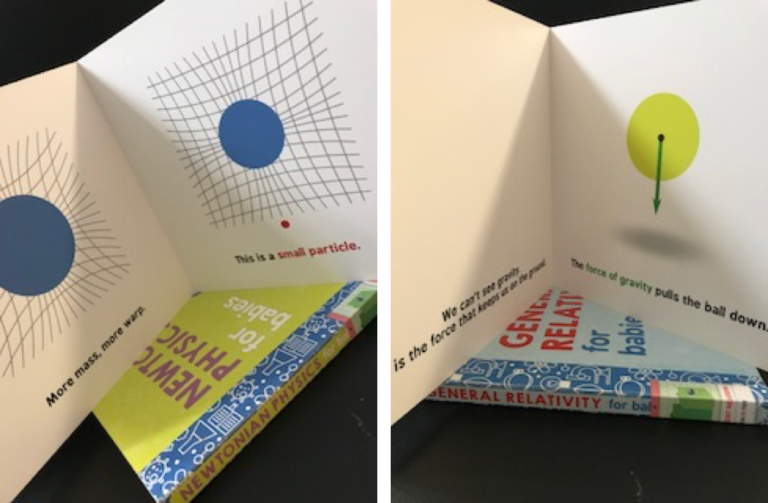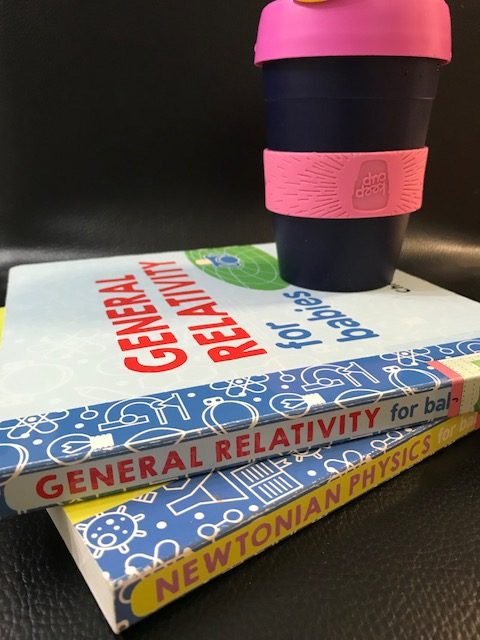Rocket Science for Babies?
I was mostly a straight As student while at University, except when it came to subjects that had ‘quantum’, ‘physics’ and ‘thermodynamics’ in them. Try as I might, these concepts would simply not stick. It was only with pure grit, long hours and the Asian training of memorizing and regurgitating everything onto the examination script (I memorized everything, including long equations with weird symbols that meant little to me at the time), that I managed to score a couple of weak Bs in those exams.
So, imagine my curiosity when books by Chris Ferrie were first brought to my attention in one of the mothers’ group discussion at the University of Adelaide. ‘Newtonian Physics for Babies’, ‘Rocket Science for Babies’ and even ‘Quantum Physics for Babies’. Gee, how does one take these complex concepts and make them understandable to babies? Very curious indeed. My first thoughts were “I got to get my hands on them and start reading it to my 2.5-year-old!” (again, Asian parenting at play here).
I found these books at my local library, shelved under the ‘Emergent Readers’ section. Like most books for babies and toddlers, these have brightly colored, board-based covers. But the baby-friendly appeal ends there. Inside ‘General Relativity for babies’, the first page consisted of two balls with the sentences ‘more mass’ and ‘less mass’. Uh Oh, this is not your typical ‘A is for Apple’ book. Now how does one begin to explain ‘mass’ to a toddler? The rest of the book goes on to explore space and the concept of mass in space. ‘Newtonian Physics for babies’ uses similar illustrations to explain gravity, mass and acceleration.

I tried reading these to my 2.5-year-old and she pushed the books aside after the first few pages saying, ‘I don’t like it’ (but then again, ‘I don’t like it’ is her favourite phrase at terrible twos). Apparently, repeating pictures of lines (representing space) and balls (representing mass) were not enough to pique her interests? Undaunted, I tried it on the 6-year-old, this time with more success. We had talked about gravity a few days ago and this book made it easy for me to further explain the concept to her. Finally, I gave the books to my 10-year-old nephew and Junior Consultant on all things science. He read it quickly and reacted enthusiastically with ‘I can’t believe I actually learned something!” He loved it and said that the book made the 3 Newtonian laws very easy to grasp. In fact, he was hungry for more.
So, there you have it. My personal opinion is that these books contain too many words like ‘force’, ‘gravity’, ‘motion’ etc. and not enough baby-friendly illustrations for an average 0 – 3-year-old to stay focus (if your kids does, please contact me! I would love to meet and talk to the kid who gets Newtonian physics.). However, I do think that these are great books for introducing school-going children to science with its simple illustrations that complement the concepts well. Importantly, the books are perfect examples of science meeting art. The author has very successfully paired pictures to complex concepts like force and space. Let not our kids’ first introduction to the world of Newton and phyiscs be from a stuffy textbook filled with words and equations (my quantum mechanics text eventually found a more useful purpose as a doorstop). Hats off to Chris Feeriefor these series of books and for his personal belief that ‘it is never too early to introduce small children to big ideas!’ That is a concept that I fully get.
Pls: These books retail between $11 - 15 online at websites such as amazon, bookdepository.com and can be found at the local library here in Singapore.
It takes a village to raise a child !
Join our WhatsApp Groups or Facebook Group to interact with parents about infant care/child care in Singapore..









